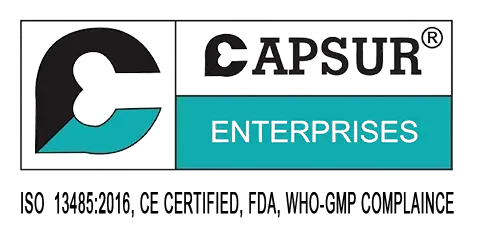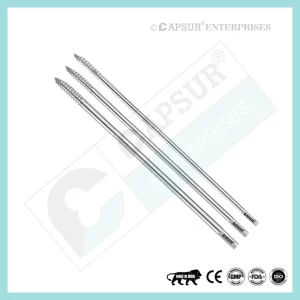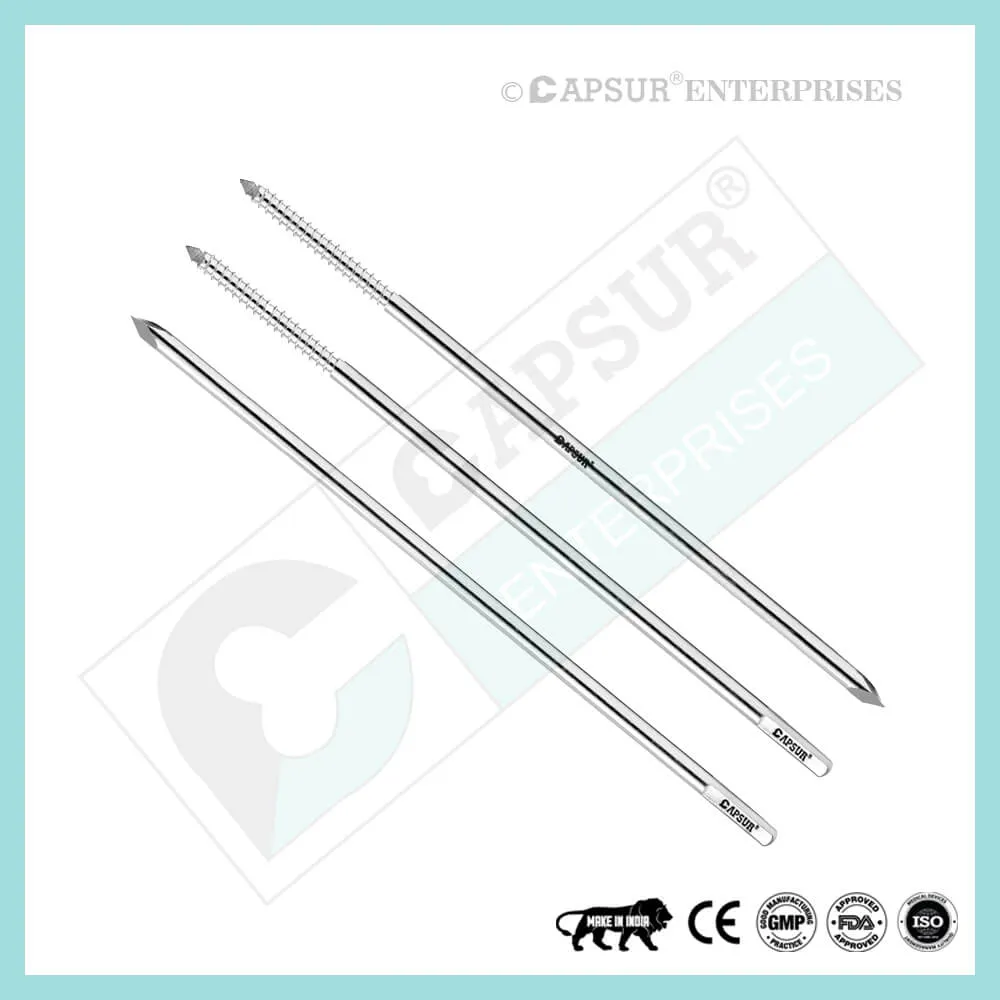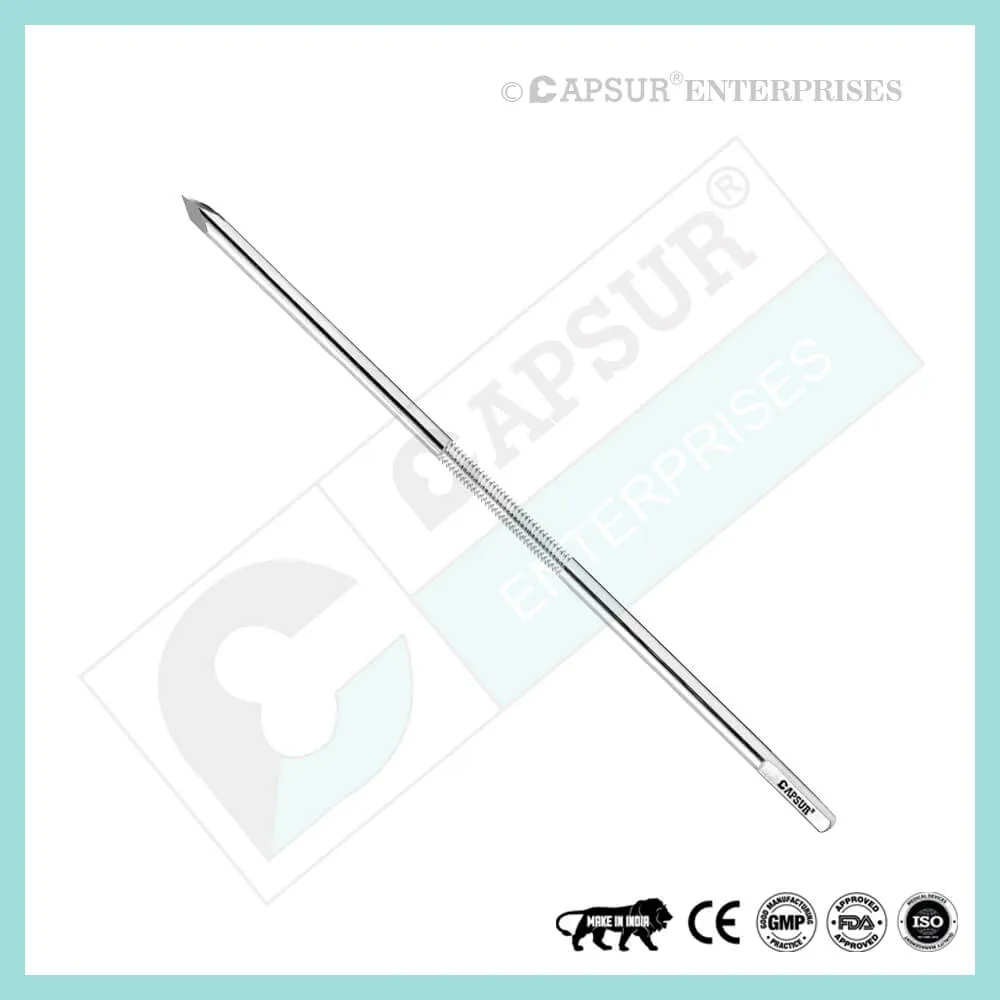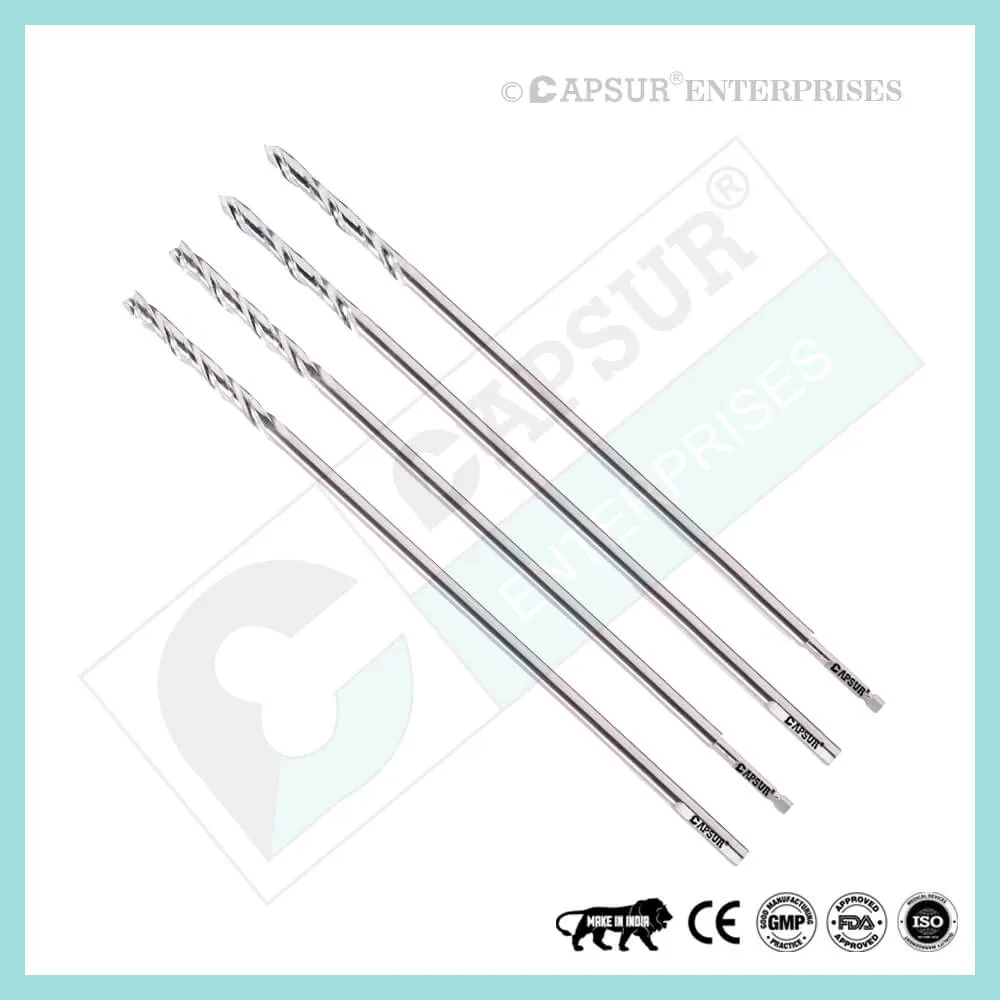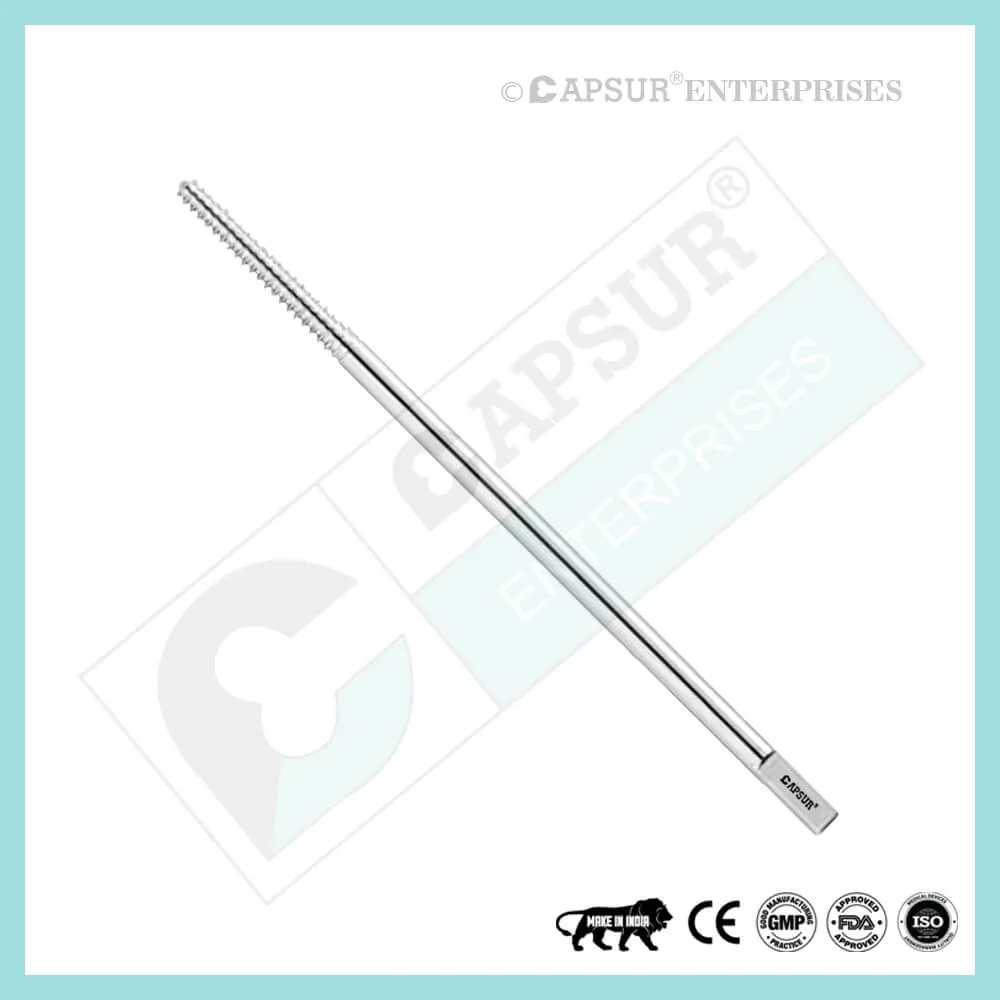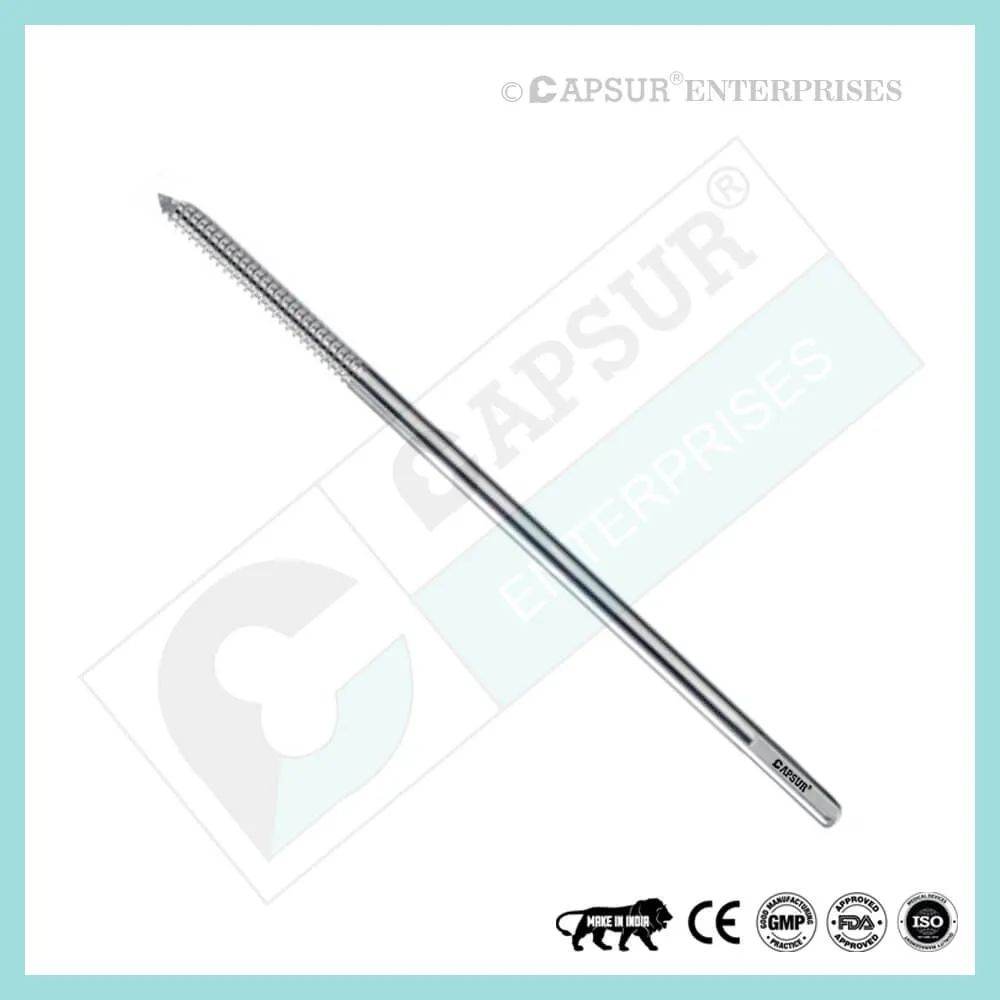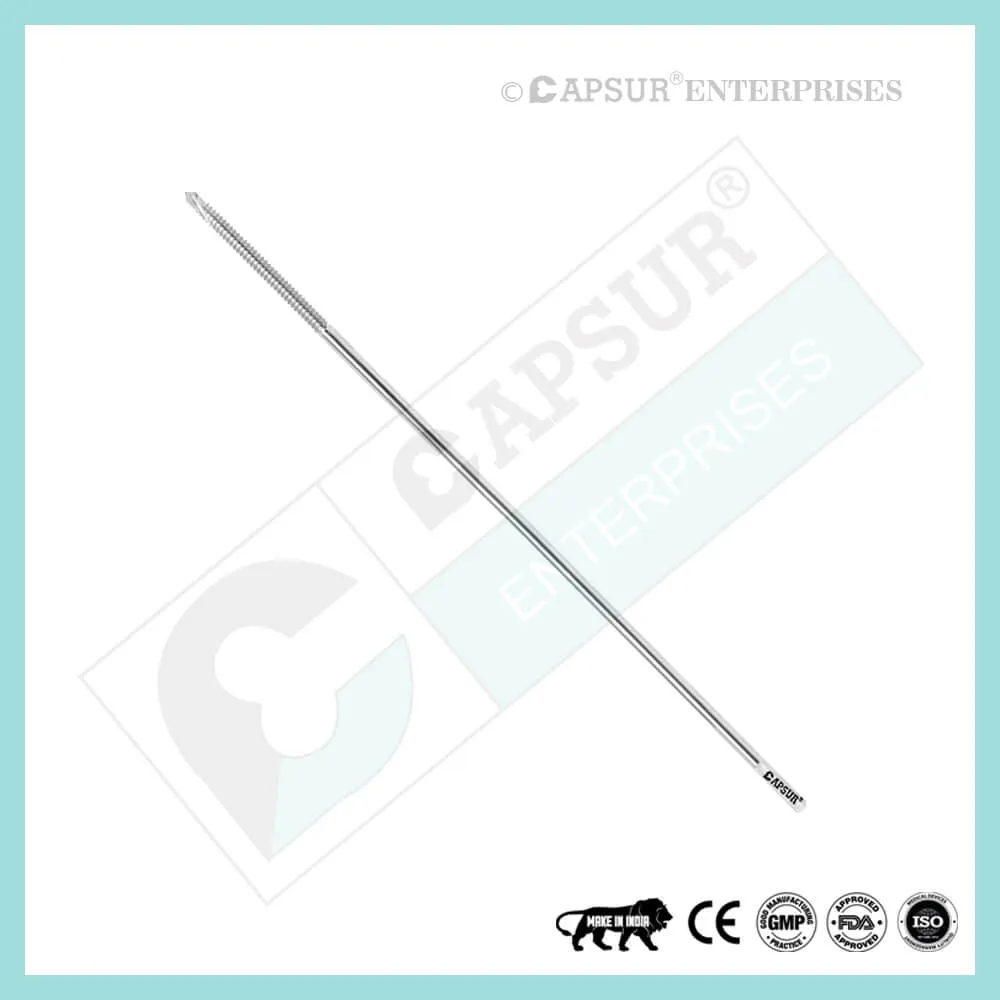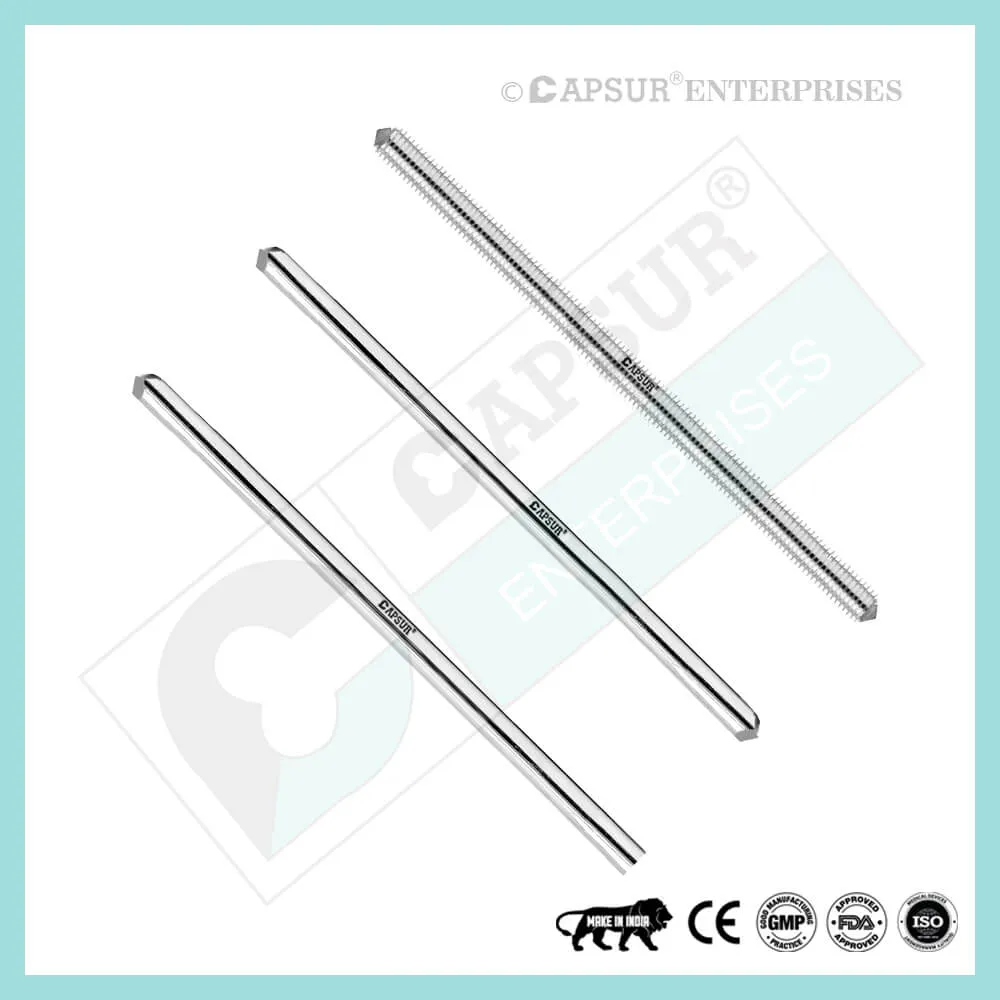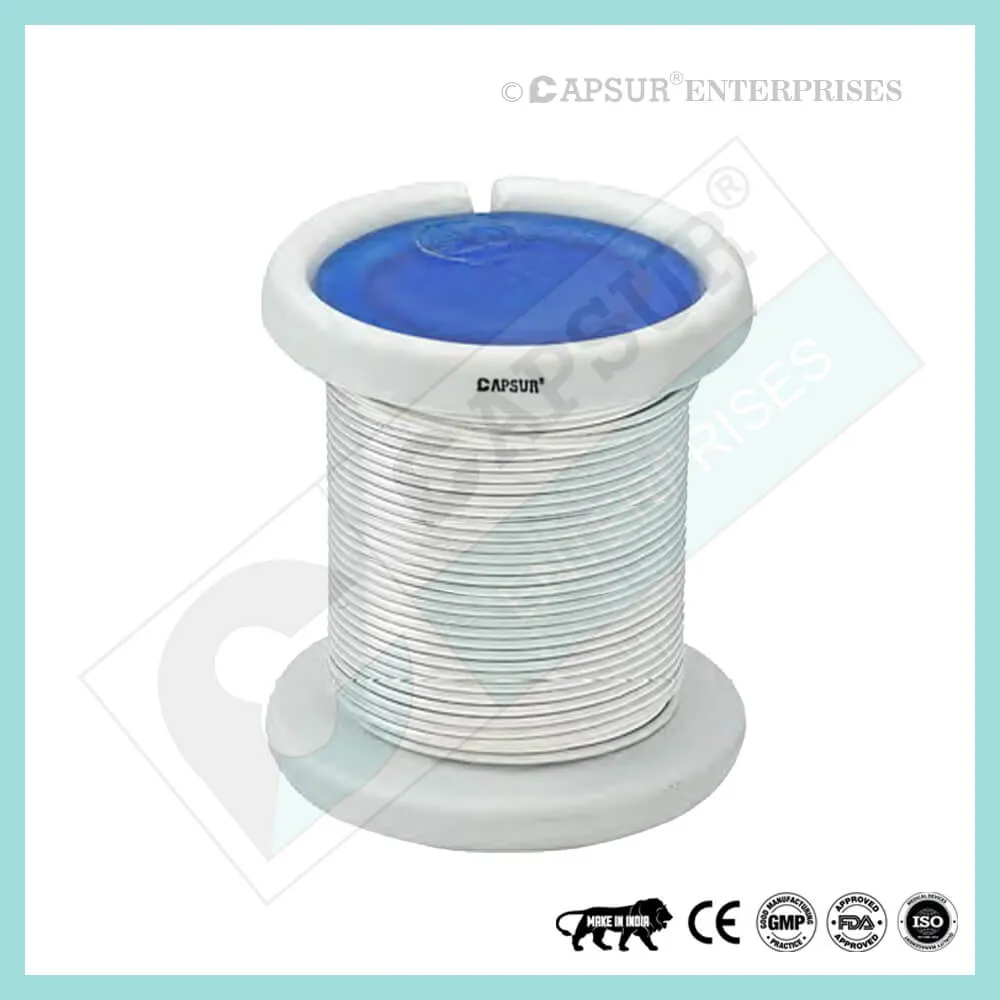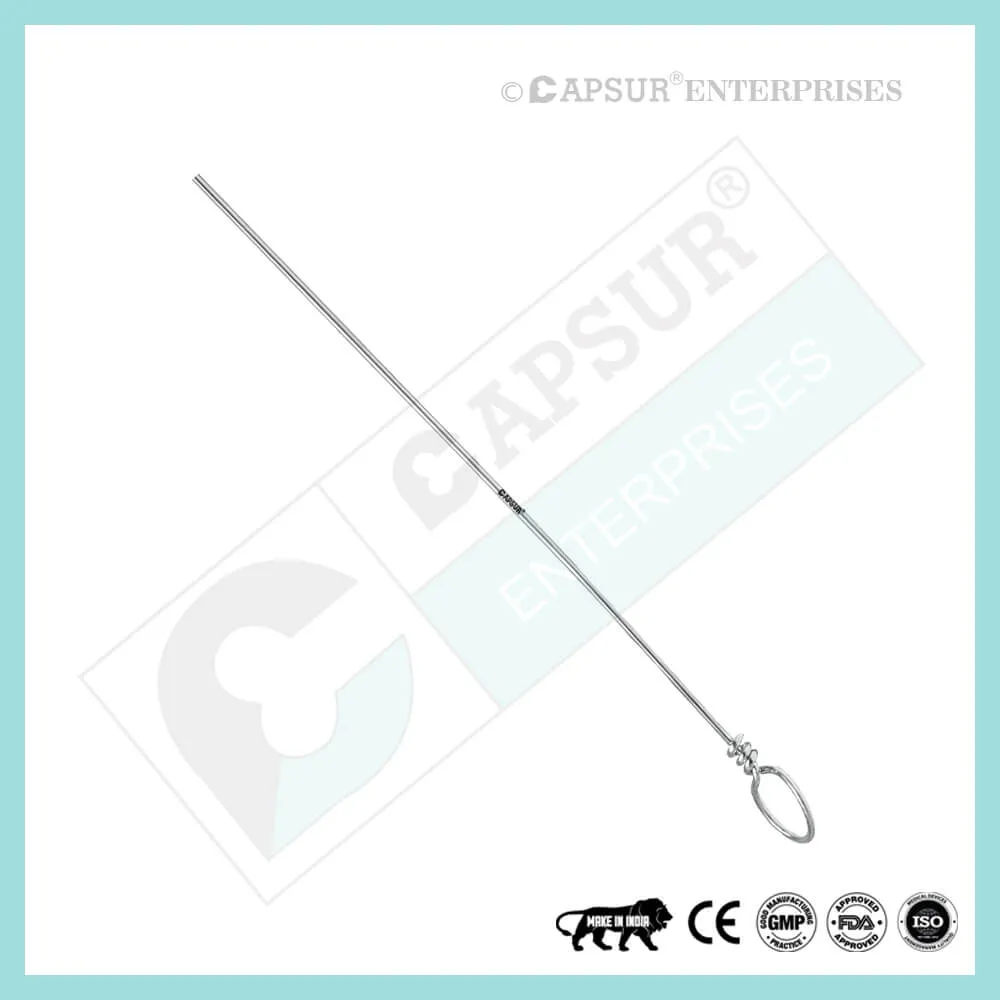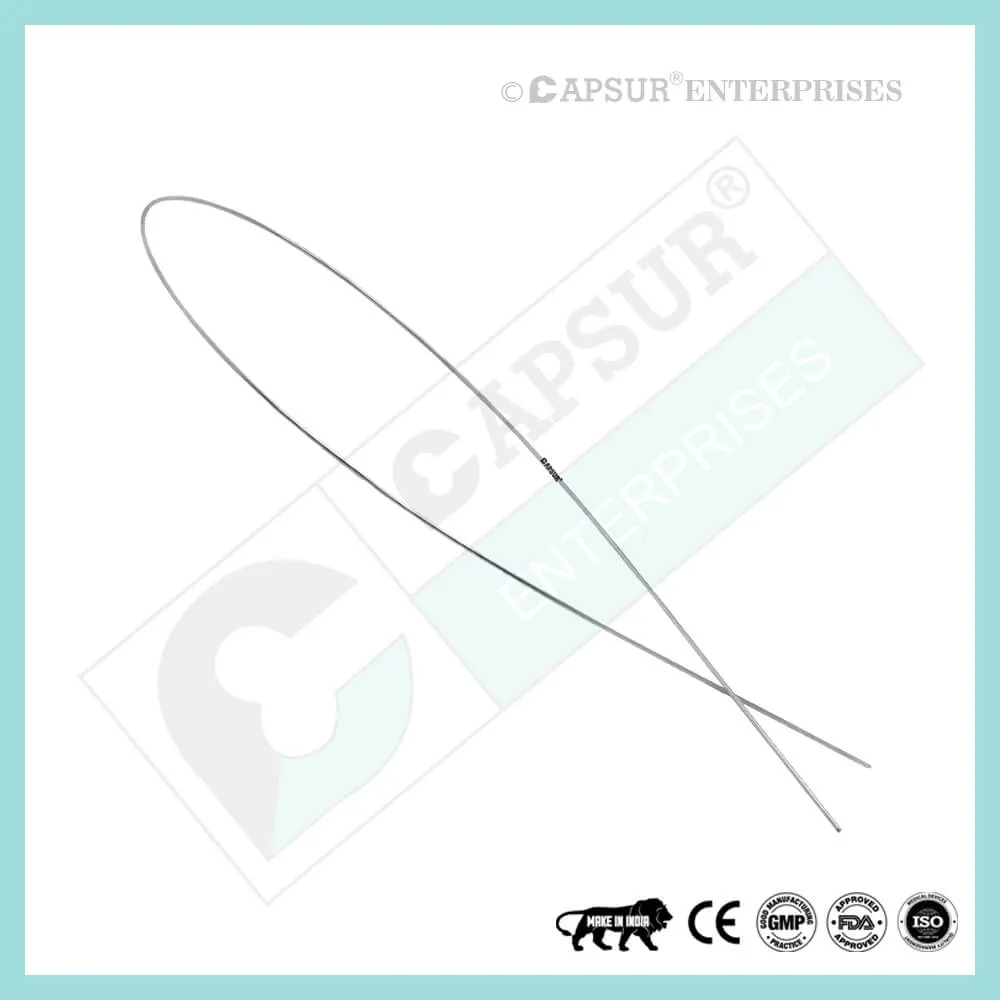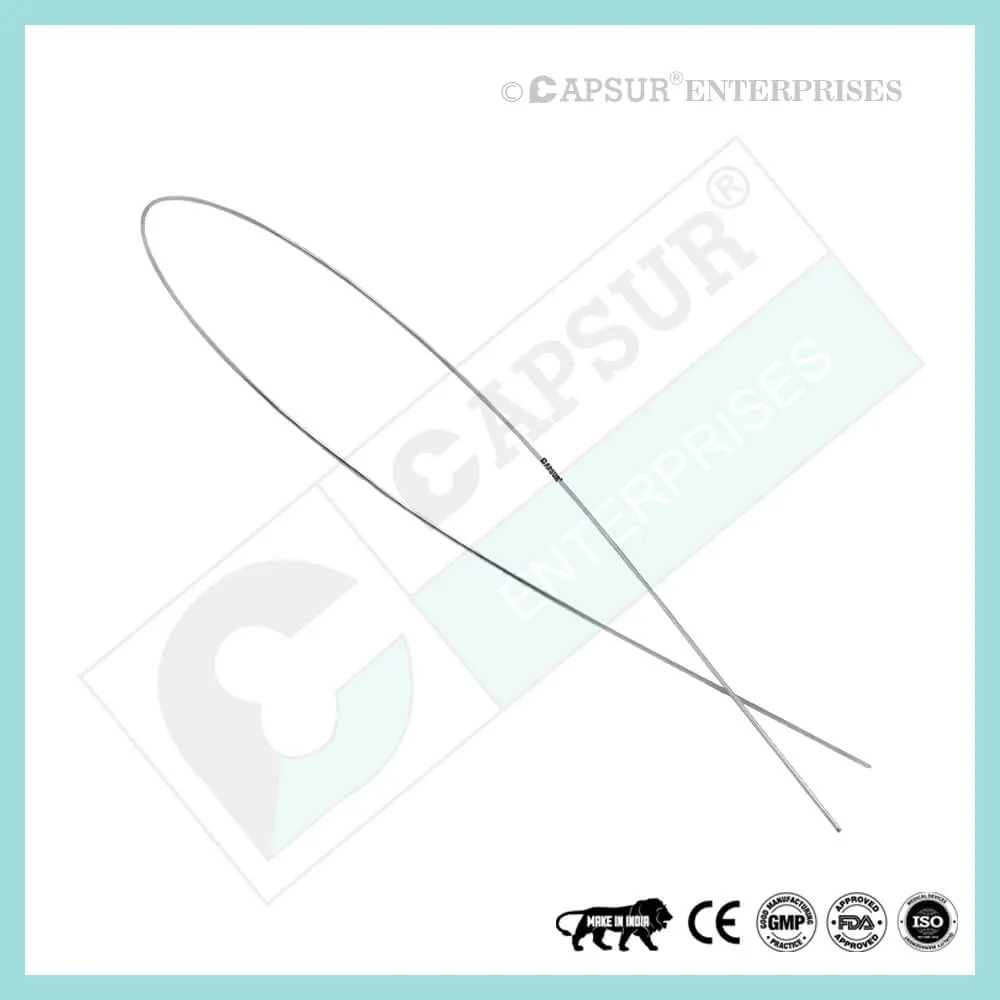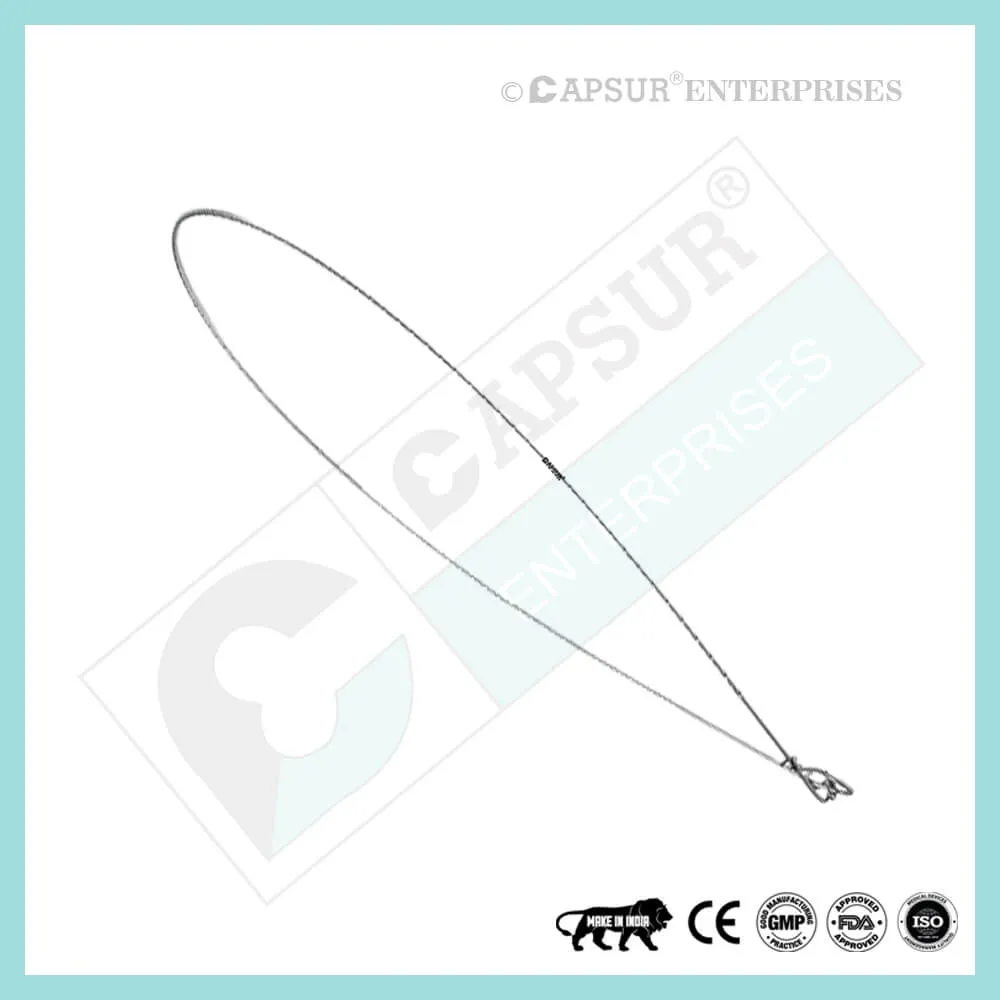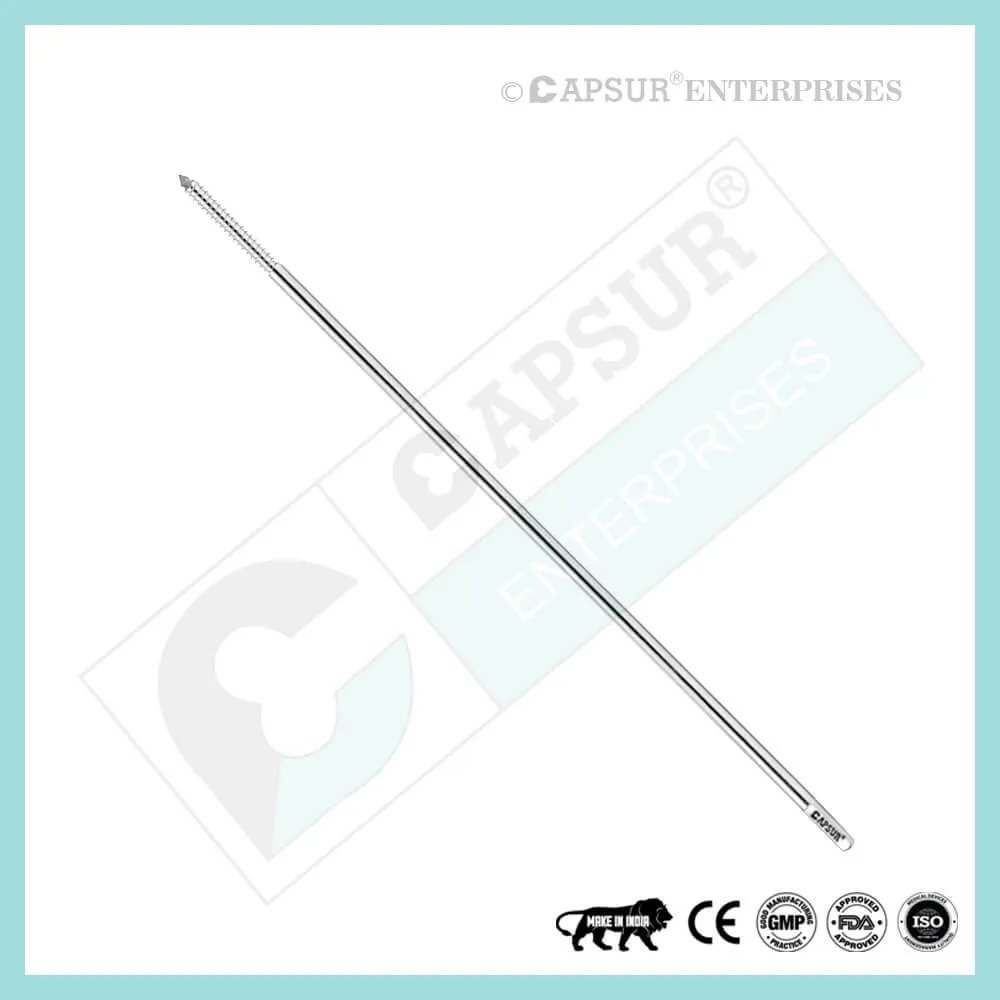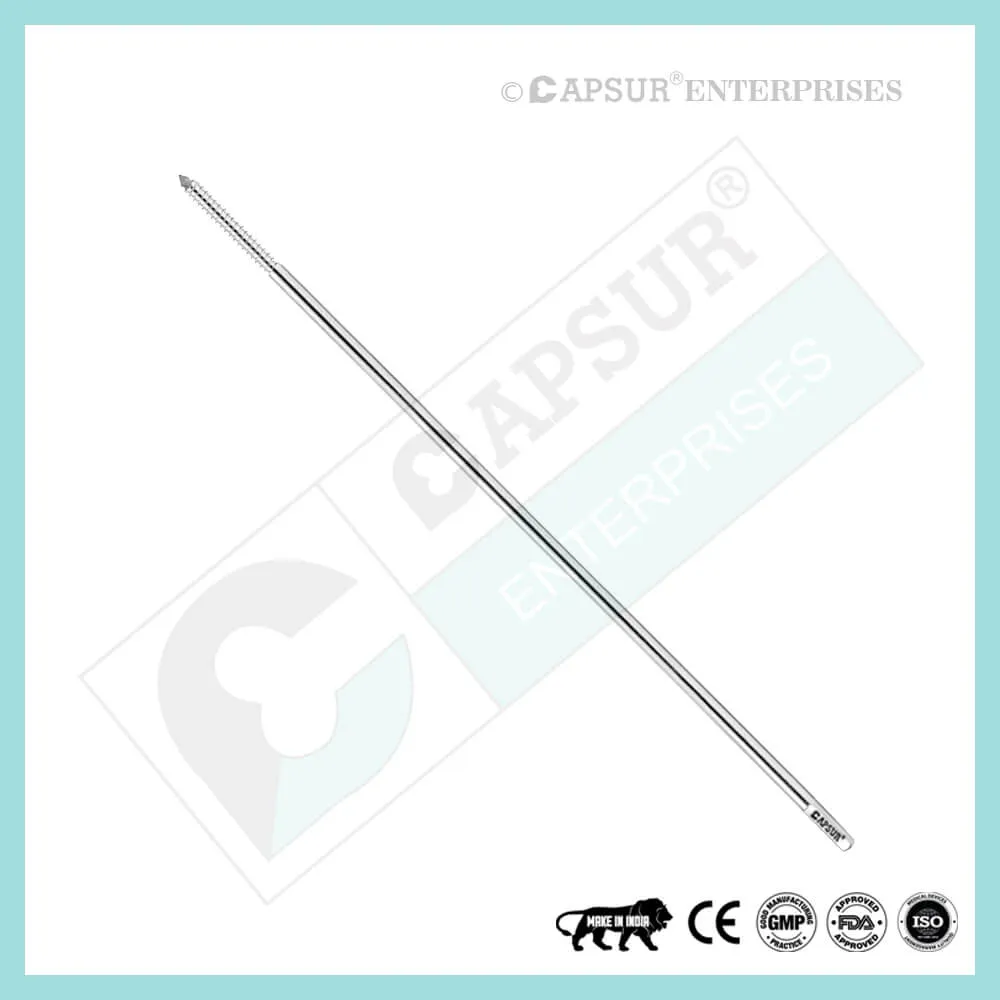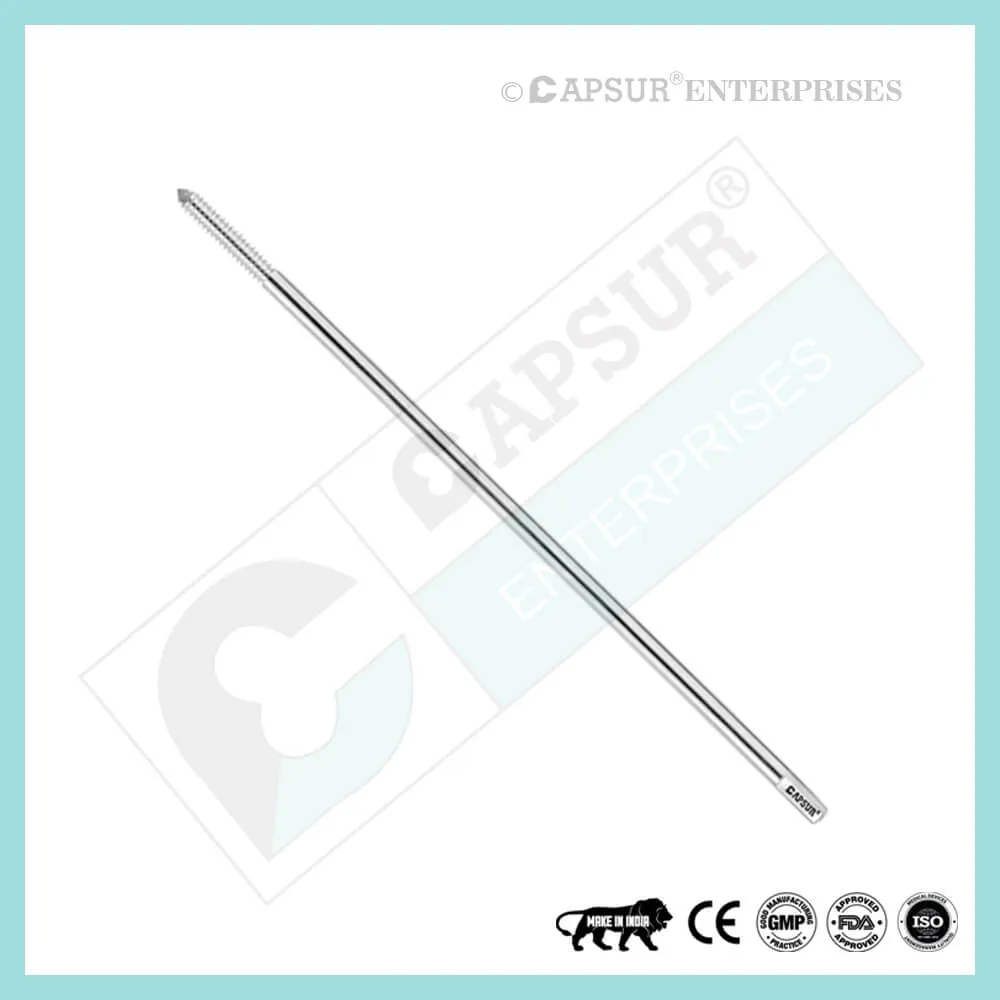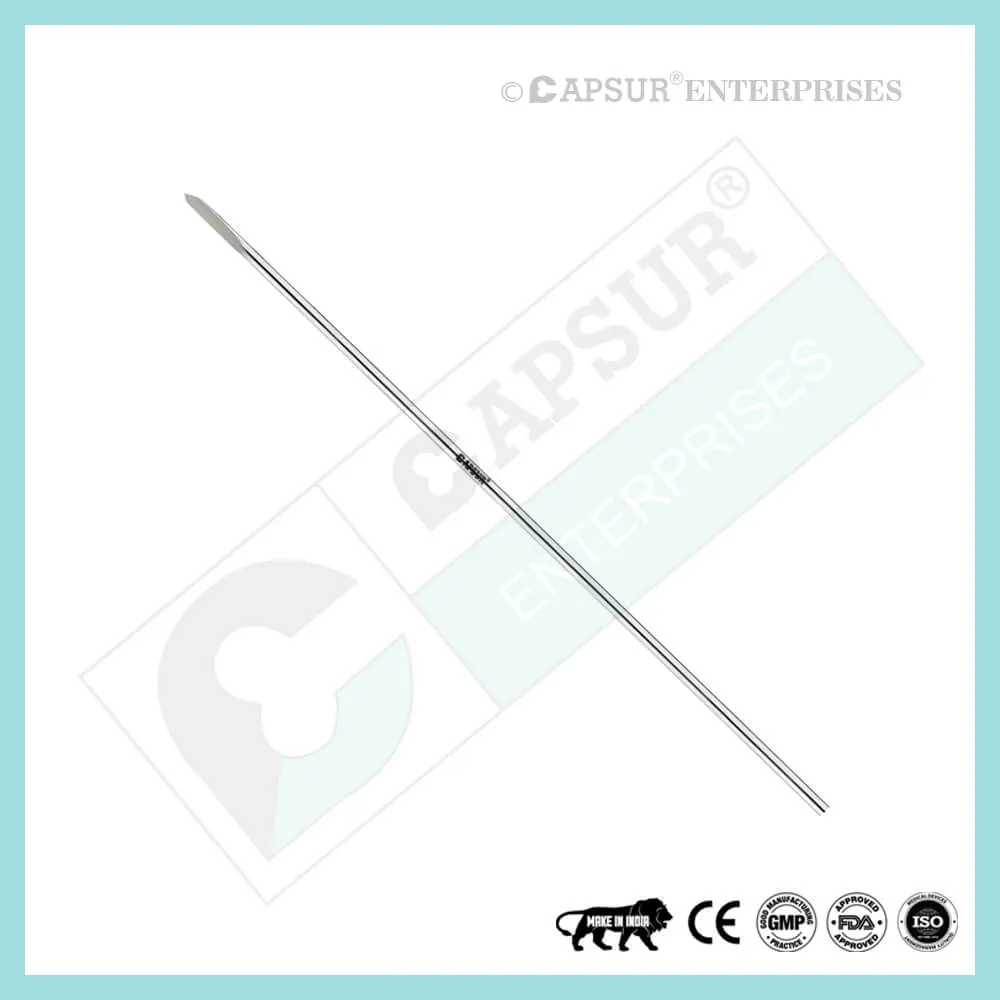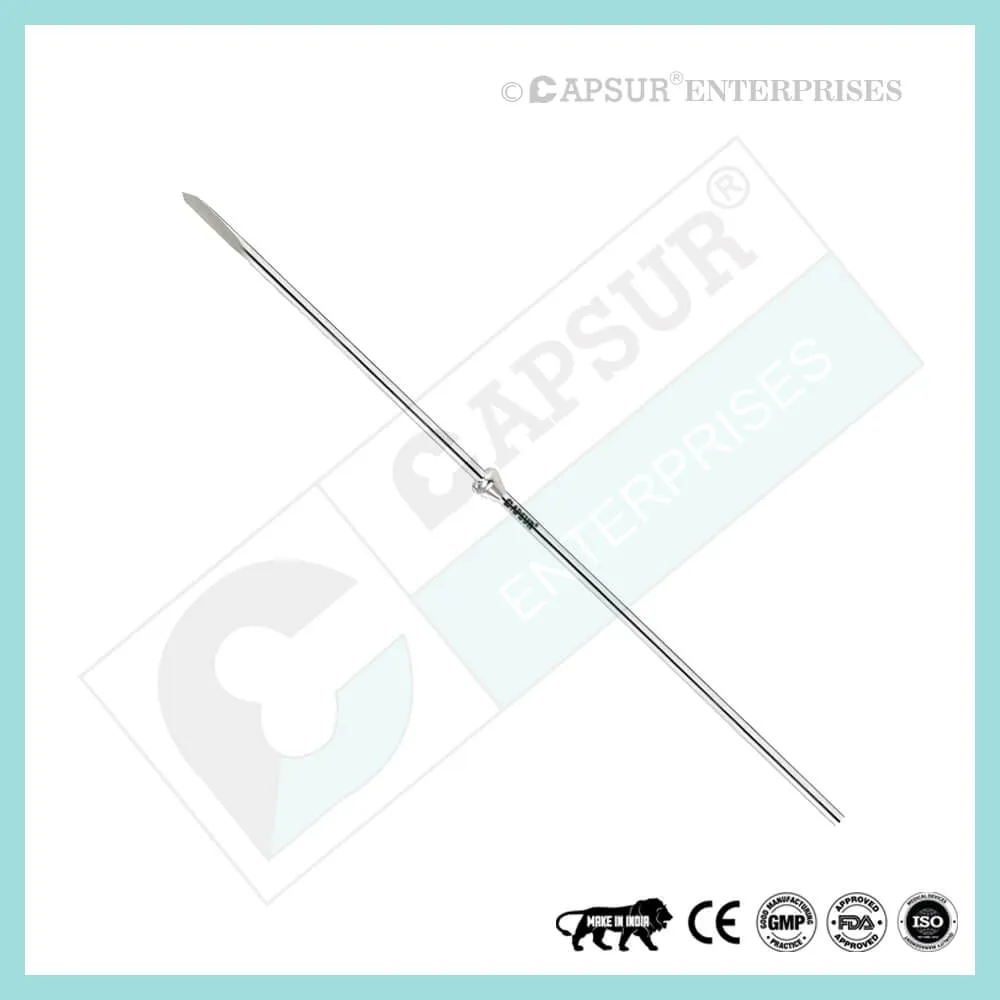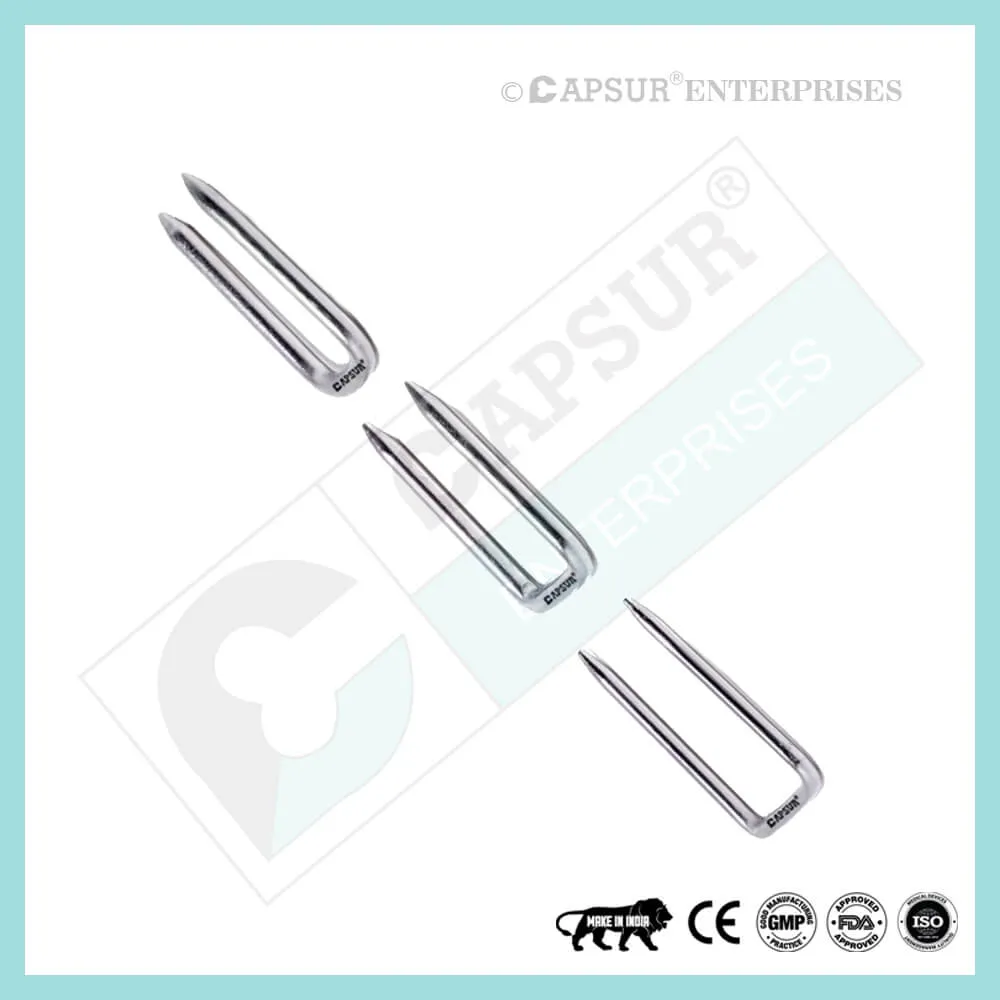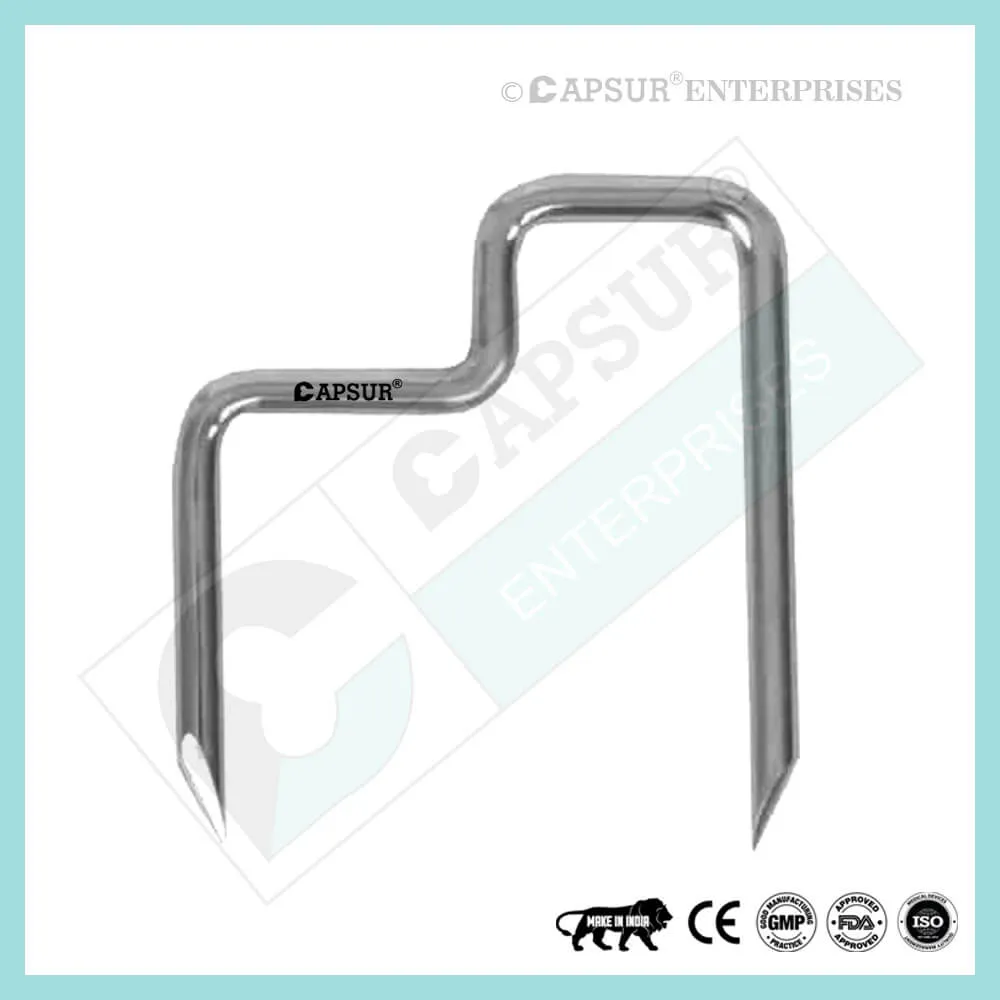Model No: 124433-A12
- Best Quality
- Affordable Pricing
- On-Time Delivery
- Customer Satisfaction
Specification for Steinmann Pins Positive Profile Thread
- Optimal Profile Steinmann The most frequent procedure in orthopaedic practice is still pin insertion. It still has applications in treating fractures suffered by medically unfit and pediatric patients, as well as for providing interim traction in almost all lower limb injuries and hip and knee pathologies, despite the fact that its use for definitive fracture treatment has steadily decreased due to the introduction of newer implants and devices.
- Positive Upper Tibial Profile The majority of fractures near the femur and hip joint necessitate the insertion of a Steinman pin. If the fundamental insertion guidelines are followed, inserting a Steinman pin is a relatively safe procedure. These days, it is rare for pins to be retained for longer periods of time, which increases the risk of complications like infection and pin loosening. Major complications include deep peroneal nerve palsy that causes foot drop, damage to children’s growth plates, and pseudoaneurysm of the anterior tibial artery, in addition to other complications like ligament and growth plate damage and pin cut through.
Uses of Steinmann Pins Positive Profile Thread
Positive Profile Steinmann Pins Sizes
- Shaft Dia / Thread Dia x Length = 4 / 5 x 100 mm
- Shaft Dia / Thread Dia x Length = 4 / 5 x 125 mm
- Shaft Dia / Thread Dia x Length = 4 / 5 x 150 mm
- Shaft Dia / Thread Dia x Length = 4 / 5 x 175 mm
- Shaft Dia / Thread Dia x Length = 4 / 5 x 200 mm
- Shaft Dia / Thread Dia x Length = 4 / 5 x 225 mm
- Shaft Dia / Thread Dia x Length = 4 / 5 x 250 mm
- Shaft Dia / Thread Dia x Length = 4.5 / 5.5 x 100 mm
- Shaft Dia / Thread Dia x Length = 4.5 / 5.5 x 125 mm
- Shaft Dia / Thread Dia x Length = 4.5 / 5.5 x 150 mm
- Shaft Dia / Thread Dia x Length = 4.5 / 5.5 x 175 mm
- Shaft Dia / Thread Dia x Length = 4.5 / 5.5 x 200 mm
- Shaft Dia / Thread Dia x Length = 4.5 / 5.5 x 225 mm
- Shaft Dia / Thread Dia x Length = 4.5 / 5.5 x 250 mm
- Shaft Dia / Thread Dia x Length = 5 / 6 x 100 mm
- Shaft Dia / Thread Dia x Length = 5 / 6 x 125 mm
- Shaft Dia / Thread Dia x Length = 5 / 6 x 150 mm
- Shaft Dia / Thread Dia x Length = 5 / 6 x 175 mm
- Shaft Dia / Thread Dia x Length = 5 / 6 x 200 mm
- Shaft Dia / Thread Dia x Length = 5 / 6 x 225 mm
- Shaft Dia / Thread Dia x Length = 5 / 6 x 250 mm
- Shaft Dia / Thread Dia x Length = 5.5 / 6.5 x 100 mm
- Shaft Dia / Thread Dia x Length = 5.5 / 6.5 x 125 mm
- Shaft Dia / Thread Dia x Length = 5.5 / 6.5 x 150 mm
- Shaft Dia / Thread Dia x Length = 5.5 / 6.5 x 175 mm
- Shaft Dia / Thread Dia x Length = 5.5 / 6.5 x 200 mm
- Shaft Dia / Thread Dia x Length = 5.5 / 6.5 x 225 mm
- Shaft Dia / Thread Dia x Length = 5.5 / 6.5 x 250 mm
- Shaft Dia / Thread Dia x Length = 6 / 7 x 100 mm
- Shaft Dia / Thread Dia x Length = 6 / 7 x 125 mm
- Shaft Dia / Thread Dia x Length = 6 / 7 x 150 mm
- Shaft Dia / Thread Dia x Length = 6 / 7 x 175 mm
- Shaft Dia / Thread Dia x Length = 6 / 7 x 200 mm
- Shaft Dia / Thread Dia x Length = 6 / 7 x 225 mm
- Shaft Dia / Thread Dia x Length = 6 / 7 x 250 mm
- Shaft Dia / Thread Dia x Length = 6.5 / 8 x 100 mm
- Shaft Dia / Thread Dia x Length = 6.5 / 8 x 125 mm
- Shaft Dia / Thread Dia x Length = 6.5 / 8 x 150 mm
- Shaft Dia / Thread Dia x Length = 6.5 / 8 x 175 mm
- Shaft Dia / Thread Dia x Length = 6.5 / 8 x 200 mm
- Shaft Dia / Thread Dia x Length = 6.5 / 8 x 225 mm
- Shaft Dia / Thread Dia x Length = 6.5 / 8 x 250 mm
Positive Profile Steinmann Pin Risk Factor
When assessing the prognosis in each case, contraindications—which may be partial or complete—must be taken into account. Under the following circumstances, alternative management strategies may need to be taken into account:
- infections that are systemic or local, acute or chronic.
- either localized, systemic, or chronic inflammation.
- serve as a dangerous vascular, nervous, or muscular disease.
- Bone defects that would prevent the implant from being properly anchored.
- All associated illnesses that might jeopardize the implant’s success and functionality.
Warnings and Precautionary for Positive Profile Steinmann Pin
The surgeon and support staff should read the safety instructions in this document as well as any product-specific information in the product description, surgical techniques, and/or brochures before using Positive Profile Steinmann Pin.
Pins are produced with the utmost care using materials of the highest quality for medical use. If used properly, these high-quality pins guarantee the best working outcomes. As a result, the usage guidelines and safety advice below must be followed.
Improper use of a pin can result in injury to the operator, patients, or other people as well as tissue damage, premature wear and tear, instrument destruction, and instrument destruction.
The operating surgeon must actively participate in the medical care of their patients. The surgeon must have a complete understanding of the instruments, their limitations, and the surgical procedure. The surgeon and the surgical team are responsible for exercising caution in the selection and use of surgical instruments. Before using implants, adequate surgical training should be obtained.
Factors that could harm the operation’s success include:
- allergies to materials implanted.
- regional bone tumors.
- osteomalacia or osteoporosis.
- metabolic disturbances and systemic disease.
- drug and alcohol abuse.
- Excessive shock-producing physical activity that exposes the implant to blows and/or heavy loads.
- Patients who lack the mental capacity to comprehend and follow instructions from a doctor.
- Unhealthy overall.
- Potential Negative Effects
The most frequent side effects following implantation are as follows:
- cyclic loading of the fixation site and/or a tissue reaction to the implant may cause the pin to loosen.
- the two stages of infection.
- additional bone fracture brought on by abnormal stress or weakened bone structure.
- a hematoma or pressure-related pressure that causes temporary or permanent neural damage.
- Hematomas from wounds and slow wound healing.
- Venous thrombosis, pulmonary embolism, and cardiac arrest are examples of vascular disease.
- heterotopically ossifying.
- Pain and discomfort brought on by the Steinmann pin with a positive profile.
- Implant mechanical failure, such as bending, loosening, or breakage.
- Implant migration leading to injury.
Preoperative Planning for Positive Profile Steinmann Pin
A thorough clinical evaluation of the patient is followed by the execution of the operating plan. X-rays are also required to provide a clear picture of the bony anatomy and any associated deformities. A full size Positive Profile Steinmann Pin must be on hand at the time of the procedure, along with the appropriate implantation tools.
The patient should be informed of any potential risks and side effects related to implant use by the clinician. It is critical to ascertain the patient’s allergy status to all implant materials prior to surgery. The patient must also be made aware that the device’s performance cannot be guaranteed because problems may shorten the device’s useful life.
Positive Profile Steinmann Pin Precautions
- During reprocessing, verify that the instruments are functional and look for wear. Before using, replace any worn-out or broken instruments.
- Utilizing the tools designated for this Pin is advised.
- Use caution when handling equipment, and put used bone-cutting tools in a sharps container.
- Always use suction and irrigation to remove any debris that may be produced during implantation or removal.
Positive Profile Steinmann Pin Warnings
Positive Steinmann profile During use, a pin may break (if excessive forces are applied). We advise that the broken part be removed whenever possible and practical for the particular patient, though the surgeon will ultimately decide whether to do so based on the risk involved. Be aware that implants lack the natural bone’s strength. Significant loads may cause implants to fail.
The user’s glove or skin may be pinched or torn by the sharp edges or moving joints of some instruments, screws, and cut plates.
Be sure to get rid of any fragments that weren’t fixed during surgery.
While the surgeon will ultimately decide whether to remove the implant, we advise that fixation devices be taken out as soon as it is safe and practical for the specific patient and after their purpose as a healing aid has been fulfilled. To prevent refracture, proper post-operative management should be performed after pin removal.
Positive Profile Steinmann Pin General Adverse Events
There are risks, side effects, and adverse events associated with all major surgical procedures. While there are many possible reactions, the following are some of the most frequent ones: issues related to anesthesia and patient positioning (such as nausea, vomiting, dental injuries, neurological impairments, etc.), thrombosis, embolism, infection, damage to nerve and/or tooth roots or other critical structures, such as blood vessels, excessive bleeding, damage to soft tissues, including swelling, abnormal scar formation, functional impairment of the musculoskeletal system, and pain.
| Steinmann Pins Positive Profile Thread |
|---|
